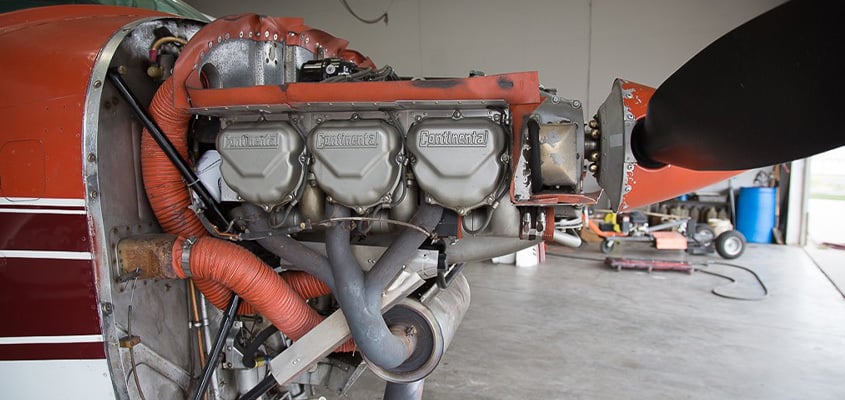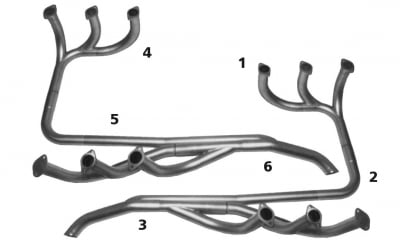Wings of Innovation: Iconic Aircraft Throughout Aviation History
Aviation has always held a fascination for humanity. The ability to defy gravity, take to the skies, and bridge vast distances in a matter of hours has been a testament to human innovation and ambition. It’s no exaggeration to say that aviation has played a pivotal role in shaping our modern world. In this blog post, we embark on a journey that transcends time, celebrating the pioneers of flight that have left an indelible mark on history and continue to inspire us today.
Early Pioneers of Flight
The Wright Flyer (1903)
Our journey begins with the Wright Flyer, a humble aircraft that forever altered the course of human history. On December 17, 1903, Orville and Wilbur Wright achieved what was once thought impossible: they flew a powered, controlled and sustained flight at Kitty Hawk, North Carolina. This historic event marked the birth of modern aviation. The Wright Flyer was a biplane with a wingspan of 12.3 meters and an engine producing a mere 12 horsepower. It was a far cry from the powerful aircraft we see today, but it represented a groundbreaking step forward. The Wright brothers’ achievement was not only in conquering the skies but also in pioneering key principles of aviation, including wing warping for roll control and a three-axis control system for stability. This breakthrough laid the foundation for all future aircraft design. More than a century later, the legacy of the Wright Flyer endures in every airplane that takes flight. It is a symbol of human ingenuity, determination, and the relentless pursuit of the seemingly impossible.
Spirit of St. Louis (1927)
Fast forward to 1927, and aviation was still in its infancy. But one man, Charles Lindbergh, was determined to push its boundaries. Lindbergh’s historic flight across the Atlantic Ocean in the Spirit of St. Louis captured the world’s imagination. Flying solo for over 33 hours, he covered 3,600 miles, connecting New York and Paris. The “Spirit of St. Louis,” named in honor of Lindbergh’s supporters in St. Louis, Missouri, who paid for the aircraft, was a custom-built monoplane designed for long-distance flight. Its remarkable feat wasn’t just a personal achievement; it showcased significant technological advancements. Lindbergh’s aircraft was built with a single engine and a single set of wings, which eliminated the risk of engine failure due to multiple engines. This innovative approach helped ensure his success. Lindbergh’s flight heralded a new era of long-distance air travel and paved the way for the commercial aviation industry we know today. It also inspired a generation of aviators and explorers to reach for the skies and beyond.
World War II Legends
Spitfire (1936)
The 1930s saw the world on the brink of war, and the Supermarine Spitfire emerged as a symbol of British resilience during the Battle of Britain. This fighter aircraft was known for its exceptional maneuverability, speed, and firepower. Pilots flying the Spitfire defended the British skies against the relentless onslaught of the German Luftwaffe. What made the Spitfire remarkable was its elliptical wing design, which provided exceptional aerodynamic performance. It was powered by the Rolls-Royce Merlin engine, a masterpiece of engineering that delivered the speed and power needed to counter the Luftwaffe’s attacks. The Spitfire’s impact extended beyond its role in combat. It became a beacon of hope and resistance during a dark period in history. Its legacy endures not only as a testament to British ingenuity but also as an icon of aviation history. Even today, its influence can be seen in the design of modern fighter jets.
B-17 Flying Fortress (1938)
While the Spitfire was battling in the skies over Europe, another historic plane, the B-17 Flying Fortress, was taking flight. This four-engine heavy bomber was a game-changer during World War II. The “Flying Fortress” earned its name through its formidable armament and ability to withstand enemy attacks. It was designed to carry a heavy bomb load deep into enemy territory. The B-17’s crew appreciated its rugged construction and the protection it offered in the face of enemy fire. The B-17 was instrumental in Allied bombing campaigns, striking vital targets in Europe and the Pacific. Its cultural impact is evident in countless wartime movies and literature, and its legacy lives on in modern strategic bombers like the B-2 Spirit and B-52 Stratofortress.
Post-War Innovations
Concorde (1969)
As World War II came to an end, the world turned its attention to commercial aviation. One aircraft stands out as a symbol of luxury and speed: the Concorde. Conceived in the 1960s, the Concorde was a supersonic passenger jet that could travel at twice the speed of sound, reducing transatlantic flight times to a mere three hours. The Concorde was a technological marvel, featuring a sleek delta-wing design and four powerful afterburning turbojet engines. Its delta wing design allowed it to travel at supersonic speeds while minimizing drag. Passengers on board the Concorde enjoyed not only unprecedented speed but also luxurious accommodations. The Concorde is a groundbreaking innovation in air travel, making it possible to have breakfast in London and lunch in New York. Although it was retired in 2003, the Concorde’s legacy remains a symbol of human achievement in aviation technology and a reminder of the bygone era of supersonic passenger travel.
SR-71 Blackbird (1966)
In the realm of military aviation, few aircraft are as enigmatic and awe-inspiring as the SR-71 Blackbird. Introduced in 1966, the SR-71 was the fastest aircraft in the world, capable of flying at speeds exceeding Mach 3 (three times the speed of sound) and at altitudes of 85,000 feet. Designed for reconnaissance and intelligence-gathering missions, the Blackbird was often flown on the edge of space. Its black and futuristic design earned it the nickname “Blackbird.” The aircraft’s extraordinary speed allowed it to outrun enemy missiles and interceptors, making it nearly invulnerable. The SR-71 conducted countless espionage and reconnaissance missions during the Cold War, providing crucial intelligence to the United States and its allies. Its influence on modern military aviation is undeniable, and its legacy lives on in the design of contemporary spy planes.
Modern Marvels
Space Shuttle (1981)
The transition from aviation to space exploration was marked by the debut of the Space Shuttle program in 1981. The Space Shuttle, with its iconic orbiter, solid rocket boosters, and external fuel tank, championed human ambition to explore beyond our planet. The Space Shuttle was not just a spacecraft; it was a versatile vehicle capable of carrying astronauts and cargo into low Earth orbit. It revolutionized space access by providing a reusable and cost-effective means of reaching space. The Space Shuttle conducted historic missions, including the deployment of the Hubble Space Telescope, which has expanded our understanding of the universe. Although the Space Shuttle program came to an end in 2011, its legacy persists in the pursuit of future space exploration endeavors. Concepts such as reusability and versatility continue to shape the design of next-generation spacecraft.
F-22 Raptor (2005)
In the 21st century, the F-22 Raptor has taken center stage in military aviation. This fifth-generation fighter jet is a technological and engineering triumph, combining stealth, speed, agility, and advanced avionics. The F-22 Raptor was designed to achieve air superiority, ensuring it could dominate the skies in any conflict. Its stealth capabilities make it nearly invisible to enemy radar, while its unmatched maneuverability allows it to outperform any adversary. The aircraft’s advanced sensors and communication systems provide pilots unparalleled situational awareness. The F-22’s influence on modern air warfare is profound. It has set the standard for contemporary fighter aircraft, pushing the boundaries of what’s possible in terms of speed, stealth, and combat capabilities. Its ongoing presence in the U.S. Air Force ensures its legacy will continue for years.
Boeing 787 Dreamliner (2011)
In the world of commercial aviation, the Boeing 787 Dreamliner has redefined how we fly. Introduced in 2011, the Dreamliner is known for its innovative design, fuel efficiency, and passenger comfort. Boeing took a revolutionary approach to the Dreamliner’s construction, using advanced materials like carbon-fiber composites to reduce weight and increase fuel efficiency. This made the aircraft more environmentally friendly and allowed airlines to operate more cost-effectively. Passengers on board the Dreamliner experience a new level of comfort with larger windows, improved air quality, and quieter cabins. The aircraft’s long range and fuel efficiency have opened up new routes and connected cities across the globe. The Boeing 787 Dreamliner has transformed the commercial aviation industry, making air travel more sustainable and enjoyable for passengers. Its cutting-edge features and sustainable practices set the stage for the future of aviation.
SpaceX Starship (in development)
As we look to the future, one aircraft—or spacecraft, to be more precise—holds the promise of revolutionizing space exploration. SpaceX’s Starship is a fully reusable spacecraft designed for missions beyond Earth orbit, including crewed missions to the Moon, Mars, and beyond. Starship’s design is ambitious, with a stainless steel body and the ability to carry both crew and cargo. It’s intended to be versatile, with the potential for point-to-point travel on Earth and missions to distant celestial bodies. Starship represents a new era of space exploration, where humanity’s reach extends far beyond our own planet. While the spacecraft is still in development, it has already captured the imagination of space enthusiasts and scientists worldwide. Its potential for interplanetary travel and its anticipated impact on the future of aviation and space exploration make it one of the most exciting developments in recent years.
The sky is not the limit—it marks the beginning of our boundless journey!
In the span of just over a century, aviation has evolved from the Wright brothers’ first flight to supersonic passenger travel, reconnaissance at the edge of space, and missions beyond Earth orbit. These legendary aircraft, each with its unique story and contribution, have left an impact on aviation and the world. They remind us of the boundless possibilities of human innovation and the power of determination in the face of seemingly insurmountable challenges. The enduring legacies of these aircraft continue to shape the aviation and aerospace industries, inspiring future generations to reach for the skies and explore the cosmos. As we reflect on the ever-evolving landscape of aviation and space exploration, we are reminded that the sky is not the limit; it is merely the beginning of our boundless journey through the realms of aviation and space. Whether in the form of supersonic passenger jets, stealthy fighter aircraft, or interplanetary spacecraft, these distinguished vehicles remind us that humanity’s thirst for exploration and discovery knows no bounds.


